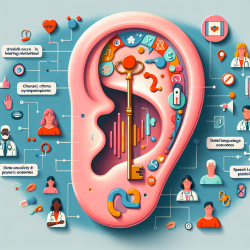Introduction
Adolescence is a critical developmental stage where the prevalence of depressive symptoms often increases, particularly among females. Recent research has highlighted the importance of understanding the neural mechanisms that connect stress-reactive rumination with adolescent depression. A study titled "Disrupted amygdala-prefrontal connectivity during emotion regulation links stress-reactive rumination and adolescent depressive symptoms" provides significant insights into this phenomenon.
Key Findings
The study utilized functional MRI (fMRI) to examine the connectivity between the amygdala and the ventrolateral prefrontal cortex (VLPFC) in adolescent girls. The research revealed that positive functional connectivity between these regions during emotion regulation tasks is associated with increased depressive symptoms. This connectivity pattern suggests a failure in the regulatory function of the VLPFC, which is crucial for down-regulating the amygdala's response to stress.
Implications for Practitioners
For practitioners working with adolescents, these findings underscore the importance of addressing stress-reactive rumination in therapeutic settings. Here are some strategies that can be implemented:
- Mindfulness and Cognitive Behavioral Therapy (CBT): These approaches can help adolescents develop healthier emotion regulation strategies, reducing reliance on rumination.
- Stress Management Techniques: Teaching adolescents how to manage stress effectively can prevent the onset of rumination and its associated neural patterns.
- Neurofeedback: This emerging technique could be used to train adolescents to alter their brain connectivity patterns, promoting healthier emotion regulation.
Encouraging Further Research
While this study provides valuable insights, further research is necessary to explore the causal relationships between stress-reactive rumination, neural connectivity, and depression. Longitudinal studies could help determine whether interventions targeting rumination can alter neural connectivity patterns and reduce depressive symptoms over time.
Conclusion
Understanding the neural underpinnings of stress-reactive rumination and its link to adolescent depression is crucial for developing effective interventions. By focusing on emotion regulation strategies and stress management, practitioners can help mitigate the impact of rumination on adolescent mental health.
To read the original research paper, please follow this link: Disrupted amygdala-prefrontal connectivity during emotion regulation links stress-reactive rumination and adolescent depressive symptoms.










